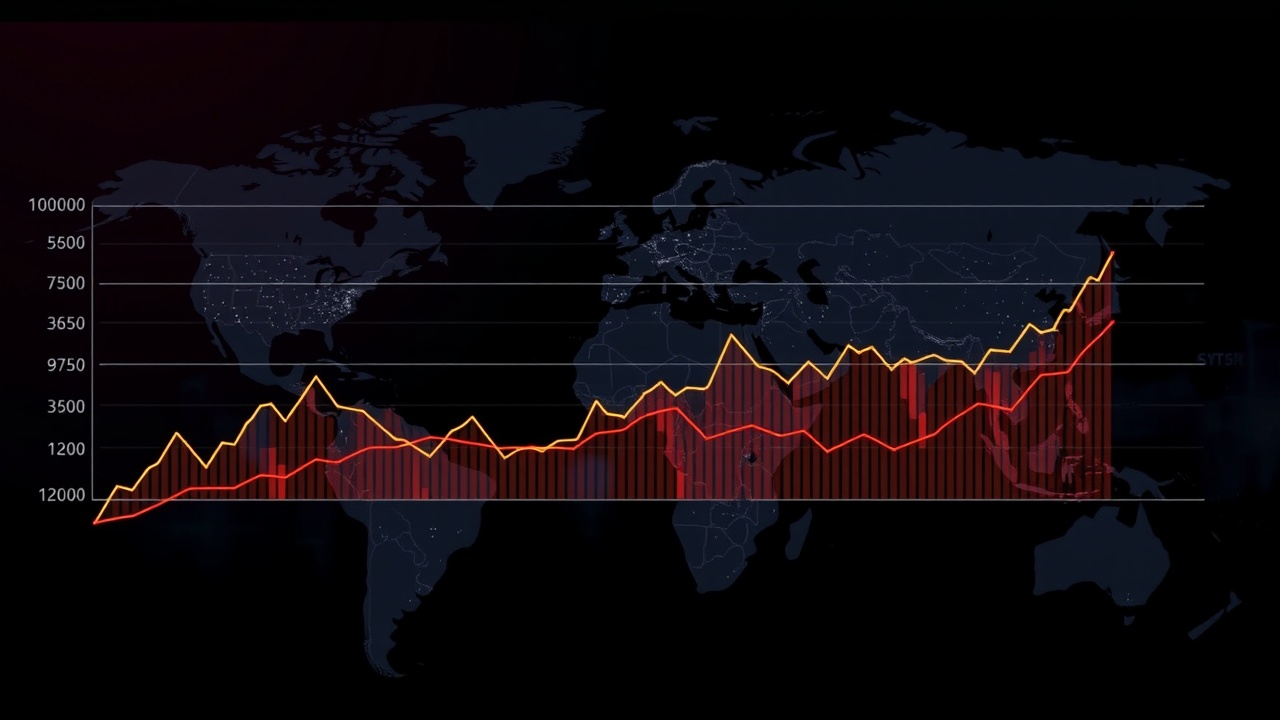
Despite being disregarded by investors, medium-sized businesses may present an alluring "sweet spot"
Amidst market volatility, we examine the argument for mid-cap stocks.
According to Aberdeen Asset Management's analysis, investors who are eager to diversify away from US mega-cap stocks and steer clear of the worst of the current market volatility should choose global mid-cap stocks.
When considering the best stocks or funds to invest in to add diversification, a person with a significant weighting in the US may find that global mid-caps are appealing.
The MSCI World Mid-Cap Index defines global mid-caps as those that are less exposed to the US stock market than large-cap stocks. The MSCI World Mid-Cap Index is 62 percent US-weighted, while the MSCI World Index is 72 percent US-weighted.
Aberdeen SICAV I-Global Mid-Cap Equity fund manager Anjli Shah states: "Investors have long ignored and undervalued mid-caps globally. Only a small number of international funds still concentrate solely on this segment of the market today.
However, given the advantages of diversification they provide, investors might want to give mid-cap stocks a special place in their portfolios at this time.
Forvis Mazars' chief investment officer, Ben Seagar-Scott, advises investors who hold a sizable portion of their portfolio in stocks to "definitely give some consideration to mid-cap stocks."
When compared to large-cap stocks, he says, "they are much more numerous, presenting opportunities to find relatively undiscovered gems meaning an area that active stock-pickers should be able to add real value in."
Additionally, Seagar-Scott notes, "it offers a good way to diversify away from mega-caps where valuations have been pretty expensive until fairly recently."
He warns, however, that mid-caps do have a tendency to be more volatile than their larger cousins, and that "we often see expected earnings growth have been somewhat lower" in markets where size matters and large companies can dominate.
Do mid-caps have low prices?
Medium-sized businesses have sold off less sharply than large or small-cap companies this year, and their valuations are at their lowest points in years.
Fund house Aberdeen discovered that, when compared to large companies, midcaps are trading at record low valuations worldwide, using data dating back to 2009.
This is in spite of the fact that over the previous 25 years, they have produced higher returns than their larger counterparts.
According to the data, the MSCI World mid-cap index grew more on average than the MSCI World large-cap index over a 25-year period ending on April 27, 2025.
Nonetheless, MSCI World Mid-Caps experienced less volatility on average than MSCI Small-Caps.
The companies in the MSCI ACWI Mid-Cap Index typically have a market capitalization between £10 billion and £40 billion. Compared to small caps, this market segment has lower risk and the potential for larger returns.
Global mid-caps have seen lower investor withdrawals than large and small-cap stocks during the current market sell-off. Aberdeen suggests that this might be a reflection of how appealing this "sweet spot" is given the current market turbulence.
The MSCI World Mid-Cap Index's cumulative return for the year as of April 27 was -0.47 percent, according to an Aberdeen analysis of Morningstar data.
Comparing this sell-off to those of the MSCI World Index (-1.94 percent) and MSCI World Small-Cap Index (-4.10 percent), it was less severe.
Companies that have successfully transitioned from small to mid-cap typically have well-established, robust business models that allow them to remain agile, according to Shah. As a result, mid-cap stocks may present lower risk than small-cap stocks.
Inefficiencies in the market, such as the fact that mid-caps are frequently less covered and studied than large-caps, give investors the chance to discover undiscovered treasures, he continues.
According to Shah, "investors purchasing now would be doing so at a period of record low valuations in relation to large-caps, which could be an attractive entry point."
Opportunities in mid-caps in the UK.
Aberdeen claims that the UK mid-cap sector offers superior earnings growth, a stronger domestic focus, and a persistent valuation gap relative to large caps. Due to recent market turmoil and slowing global growth, investors are once again paying attention to this sector.
For more information on which mid-cap stocks might be worthwhile to include in your portfolio, see our post on three profitable mid-cap stocks.
Co-manager of the Dunedin Income Growth Investment Trust Rebecca Maclean claims that UK mid-caps offer clear benefits over the FTSE 100, which primarily generates earnings from overseas sources.
On the other hand, the UK accounts for half of the FTSE 250's revenues, which puts them more in line with domestic economic patterns.
In the past, the UK mid-cap index has outperformed its large-cap counterparts in terms of long-term earnings growth. Forecasts indicate that this pattern will persist, with FTSE 250 earnings growth anticipated to surpass FTSE 100 in the future, according to Maclean.
UK stocks are still cheap, which is important for long-term investors. This is especially true for the mid-cap market.
"The FTSE 250 is at a 20-year low in p/e discount relative to the FTSE 100, and the UK market is currently trading 20% below its long-term average price-to-earnings (p/e) ratio," Maclean states.
Among wealth managers, one out of three cut back on US exposure in Q1.
Having exposure to the US has made wealth managers more and more gloomy.
When it comes to the US in particular, the cautious tone is revealed by the ARC Market Sentiment Survey, a quarterly survey of 78 chief investment officers in investment management that looks at the 12-month outlook for the main asset classes and sectors.
The early months of President Trump's return have shaped the macroeconomic and geopolitical environment, which has caused many businesses to reevaluate their exposure to US assets.
In relation to US assets, sentiment was 4 percent net negative, down from 36 percent net positive a year earlier.
Many investment firms made no changes, but those that did mainly decreased their exposure to US equity, especially large-cap and technology stocks, according to the survey. some greater exposure to small and mid-cap US stocks.
Since the start of our market sentiment survey in 2010, this is the largest quarter-over-quarter swing in negative sentiment in the United States, according to James Cooke, deputy CIO at ARC.
President Trump's Liberation Day tariffs could further erode public sentiment. Increased volatility in asset prices should give active managers a chance to show off their value.
"Those managers who are not making any adjustments say they plan to weather the volatility brought on by Trump because they think the tariffs may only be in place temporarily.














Leave a comment on: How to diversify from the US using mid-cap stocks